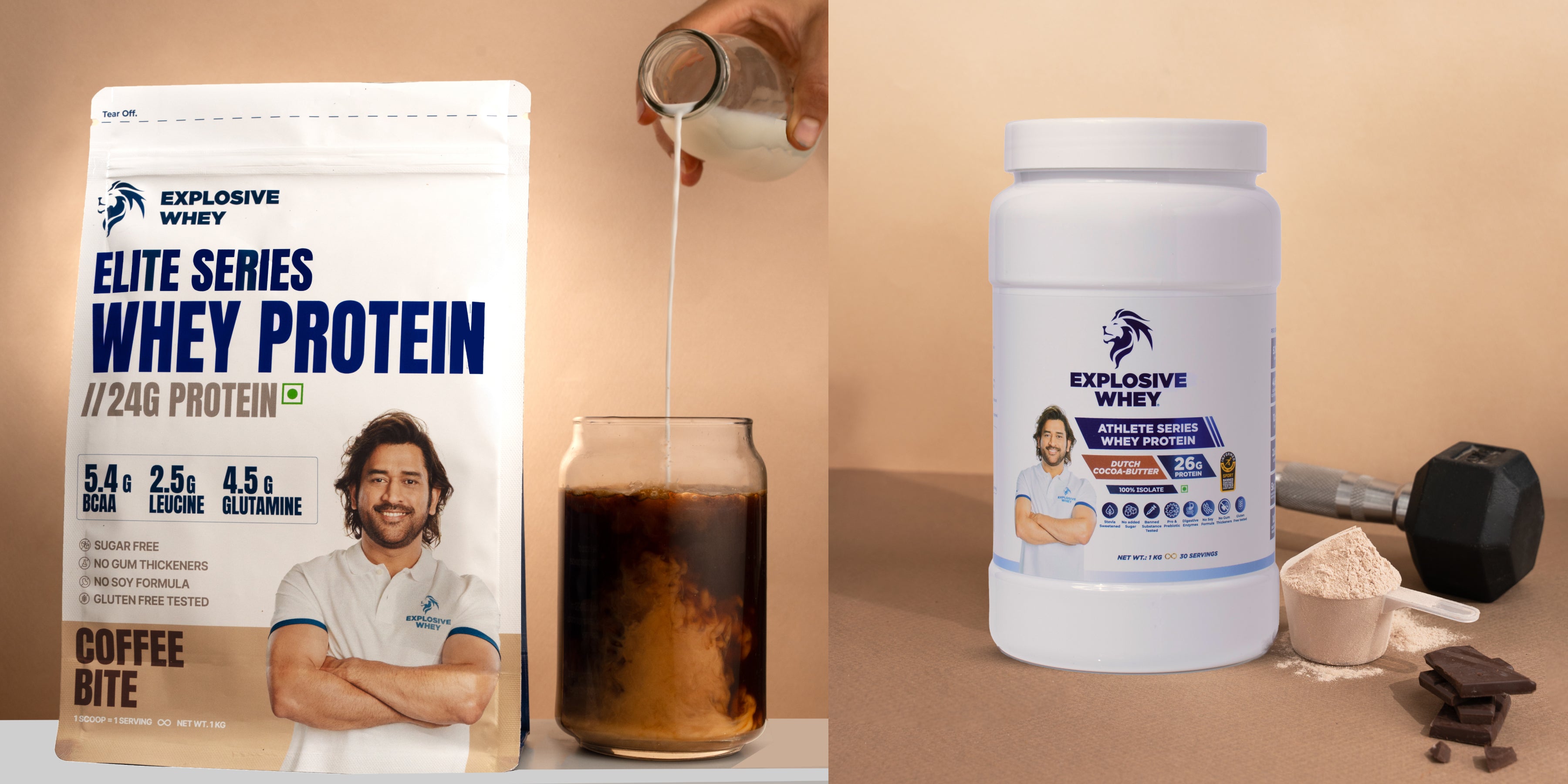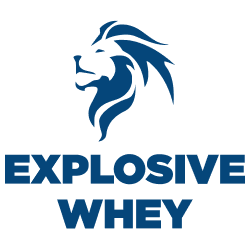Understanding the whey protein amino acid profile is key for athletes and fitness enthusiasts aiming for muscle growth and recovery. This guide explains what amino acids are in whey, why they matter, and how they support your performance and recovery goals. You'll also learn how to interpret labels and choose between whey types for your fitness routine. It’s straightforward, informative, and easy to apply.
A Complete Guide on Whey Protein Amino Acid Profile
Whey protein amino acid profile reveals the amounts of essential and non‑essential amino acids in every serving, directly impacting muscle repair and growth. It helps you compare brands and pick the one that delivers the nutrients you need. This knowledge supports smarter choices whether you’re focused on strength training, endurance, or daily nutrition support.
What Is an Amino Acid Profile?
This label lists each amino acid in the protein—both essential (you must get from food) and non‑essential (your body can make). It shows how much of each is present per serving, helping you assess protein quality and nutritional value.
Types of Amino Acids in Protein
Amino acid profiles include essential amino acids like leucine, lysine, and methionine, which your body can’t produce. Non‑essential ones like alanine or glutamine support metabolism or immune health. Knowing both groups helps you understand how complete and effective your whey is for recovery.
Why the Amino Acid Profile Matters
The amino acid makeup affects how well your body recovers muscles, synthesizes protein, and supports performance. Whey with high levels of BCAAs, especially leucine, helps trigger muscle growth signals. A balanced profile also supports overall health beyond just workouts.
How to Read an Amino Acid Profile Label
Look at the grams per serving for each amino acid, especially essential ones. Top brands list amounts for BCAAs (leucine, isoleucine, valine). Aim for products with high total EAAs and minimal fillers to ensure you get quality nutrition from each scoop.
Essential Amino Acids in Whey Protein
Animal‑based proteins like whey offer about 43% essential amino acids, the highest among common sources. This makes whey especially powerful for stimulating muscle synthesis and supporting recovery after intense training.
This table shows the exact amino acid profile present in Athlete Series Whey Protein, including the full breakdown per 33g and 100 g for detailed comparison.
|
Amino Acid |
Per 33 g Serving |
Per 100 g Powder |
|
L‑Alanine |
1.27 g |
3.80 g |
|
L‑Arginine |
0.65 g |
1.98 g |
|
L‑Aspartic Acid |
2.81 g |
8.50 g |
|
L‑Cystine |
0.58 g |
1.75 g |
|
L‑Glutamic Acid |
4.54 g |
13.76 g |
|
L‑Glycine |
0.55 g |
1.68 g |
|
L‑Histidine |
0.51 g |
1.55 g |
|
L‑Isoleucine (BCAA) |
1.63 g |
4.95 g |
|
L‑Leucine (BCAA) |
2.66 g |
8.07 g |
|
L‑Lysine |
2.29 g |
6.93 g |
|
L‑Methionine |
0.51 g |
1.55 g |
|
L‑Phenylalanine |
0.78 g |
2.35 g |
|
L‑Proline |
1.60 g |
4.86 g |
|
L‑Serine |
1.23 g |
3.72 g |
|
L‑Threonine |
1.79 g |
5.42 g |
|
L‑Tryptophan |
0.50 g |
1.53 g |
|
L‑Tyrosine |
0.73 g |
2.20 g |
|
L‑Valine (BCAA) |
1.32 g |
4.00 g |
|
Total Amino Acids |
26 g |
78.6 g |
Per 33g and 100g serving, values may vary based on brand, preparation method, and added ingredients.
What Makes a Whey’s Amino Acid Profile Unique?
Whey stands out because it naturally contains all nine essential amino acids, high BCAA content, and absorbs rapidly to fuel recovery. Let’s see what that means in practice:
Contains All 9 Essential Amino Acids
Whey protein delivers every essential amino acid your body needs for muscle synthesis and overall health. The nine that your body cannot produce are histidine, isoleucine, leucine, lysine, methionine, phenylalanine, threonine, tryptophan, and valine. Having these in one complete protein makes whey ideal for active individuals who need fast, effective nutrition to support their workouts and recovery
Naturally High in BCAAs
Whey is especially rich in branched-chain amino acids (leucine ~9 %, isoleucine ~5–6 %, valine ~5–6 %). These help trigger muscle protein synthesis and prevent breakdown, making whey an effective recovery tool after exercise.
Rapid Absorption and Bioavailability
Whey protein is quickly absorbed, especially isolates and hydrolysates—raising amino acid levels in your blood fast. That helps jump-start recovery immediately after workouts. Its high PDCAAS score confirms it’s one of the most bioavailable protein sources.
How Amino Acids Work in Your Body?

Whey’s amino acids support muscle repair, energy production, immune defense, and
Muscle Repair and Growth
Whey delivers leucine and other EAAs that activate muscle protein synthesis and repair micro‑tears from exercise. This supports strength and size gains with regular training and consistent protein intake.
Energy Production During Exercise
Some amino acids like alanine and glutamate support energy cycles during exercise. They help buffer fatigue by contributing to metabolic pathways that fuel longer sessions. Full amino acid profiles can help sustain intensity.
Recovery After Workouts
After intense training, whey’s fast‑absorbing EAAs refuel muscle tissues and support rapid recovery. They help reduce soreness and improve readiness for the next session. Consuming within 30–60 minutes maximizes this effect.
Immune and Nervous System Support
Whey contains amino acids like cysteine and histidine that support glutathione production and antioxidant activity. This helps maintain immune health, especially during intense training periods.
Whey Isolate vs Concentrate: Amino Differences

While both deliver full amino acid profiles, isolates and concentrates differ slightly in composition and absorption:
Amino Acid Content Per Serving
Whey isolate provides higher protein purity (90%+), slightly more EAAs per gram, and lower lactose. Concentrate contains ~70–80% protein plus more natural carbs and fat but still offers all essential amino acids.
Digestibility and Absorption Speed
Isolates digest faster with fewer carbs and lactose, ideal for quicker absorption and sensitive digestion. Concentrate digests slightly slower and may be less suitable for lactose‑sensitive users.
Best Option for Lactose Sensitivity
For those sensitive to lactose, isolate or hydrolyzed whey is smarter. It retains full amino acid benefits while minimizing digestive issues. Concentrate may cause discomfort in sensitive users despite delivering all EAAs.
Which One Supports Muscle Recovery Better
Both isolate and concentrate support muscle recovery thanks to their complete amino acid profiles. When comparing Whey Isolate vs Concentrate, isolates undergo extra purification, which increases protein percentage while slightly reducing fats, carbs, and lactose compared to concentrates
Understanding the whey protein amino acid profile gives you clarity when choosing supplements. Whey offers a full set of essential amino acids, rich BCAAs, and excellent bioavailability, supporting muscle growth, energy, recovery, and overall nutrition. Whether you pick isolate for speed or concentrate for richness and flavor, your choice should match your digestion, goals, and routine needs.
FAQ
Q1). What is the amino acid profile of whey protein?
It includes all nine essential amino acids plus many non-essential ones—making it a complete, high-quality protein.
Q2). Is whey protein rich in BCAAs?
Yes, it contains high levels of leucine, isoleucine, and valine, which help trigger muscle protein synthesis.
Q3). Why does the amino acid profile matter in protein supplements?
Because EAAs directly support muscle repair, recovery, and overall health—only complete protein sources can deliver these benefits effectively
Q4). Which is better for amino content, whey isolate or concentrate?
Both are complete, but whey protein isolate offers faster absorption and lower lactose, while whey concentrate provides slightly more flavor and nutrition per gram.









Leave a comment
This site is protected by hCaptcha and the hCaptcha Privacy Policy and Terms of Service apply.